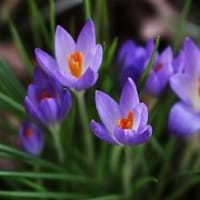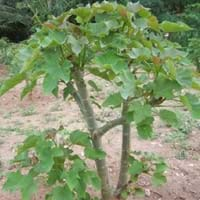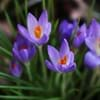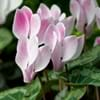Life Span
Perennial
Perennial
Type
Bulb, Flowering Plants
Shrubs, Spurge
Origin
Aegean Islands, Central Asia, Middle East, North Africa, Southern Europe, Western China
Caribbean, Central America, South America, Madagascar, South Africa
Types
Crocus abantensis, Crocus adanensis, Crocus biflorus, Crocus chrysanthus, Crocus korolkowii
Jatropha bullockii, Jatropha cinerea, Jatropha excisa
Habitat
Scrubs, Woods
Pastures, Roadsides, Warmer regions
USDA Hardiness Zone
3-8
Not Available
AHS Heat Zone
8-1
Not Available
Sunset Zone
1a, 1b, 2a, 2b, 3a, 3b, 4, 5, 6, 7, 8, 9, 10, 11, 12, 13, 14, 15, 16, 17, 18, 19, 20, 21, 22, 23, 24
Not Available
Habit
Clump-Forming
Upright/Erect
Minimum Height
Not Available
Flower Color
Blue, Orange, Pink, Purple, White, Yellow
White, Yellow, Red, Purple, Pink
Flower Color Modifier
Not Available
Not Available
Fruit Color
Not Available
Light Green, Lime Green, Yellow, Green, Ivory
Leaf Color in Spring
Green
Green, Dark Green
Leaf Color in Summer
Not Available
Green, Dark Green
Leaf Color in Fall
Green
Green, Dark Green
Leaf Color in Winter
Green
Green, Dark Green
Leaf Shape
Grass like
Palmately Lobed
Plant Season
Spring, Winter
All year
Sunlight
Full Sun, Part sun
Bright direct sunlight, Full Sun, Partial Sun
Growth Rate
Medium
Medium
Type of Soil
Loamy
Dry, Sand
The pH of Soil
Neutral, Slightly Acidic
Slightly Alkaline
Soil Drainage
Well drained
Well drained
Bloom Time
Spring, Winter
All year
Tolerances
Drought
Drought
Where to Plant?
Container, Ground, Pot
Ground
How to Plant?
From bulbs, Grafting, Seedlings
Seedlings, Transplanting
Plant Maintenance
Medium
Low
Watering Requirements
Form a Soil ring to water efficiently, Water Deeply, Water twice a day in the initial period, Water when soil is dry
Needs less watering, Water occasionally
In Summer
Lots of watering
Drought Tolerant, Average Water
In Spring
Moderate
Less Watering
In Winter
Average Water
Less Watering
Soil pH
Neutral, Slightly Acidic
Neutral
Soil Type
Loamy
Loam, Sand
Soil Drainage Capacity
Well drained
Well drained
Sun Exposure
Full Sun, Part sun
Bright direct sunlight, Full Sun
Pruning
No pruning needed in the early stages, Prune to stimulate growth, Remove dead or diseased plant parts, Requires little pruning
Prune for shortening long shoots, Prune if you want to improve plant shape
Fertilizers
All-Purpose Liquid Fertilizer
All-Purpose Liquid Fertilizer, No fertilizers needed
Pests and Diseases
Aphids, Botrytis Blight, Mushroom root rot, Narcissus Basal Rot, Narcissus Bulb Fly, Slugs, Snails, Tulip Fire, Tulip Viruses
Anthracnose, Leaf spot, Powdery mildew, Red blotch, Rust
Plant Tolerance
Drought
Drought, Drought and Salt, Heat Tolerance
Flower Petal Number
Single
Single
Foliage Texture
Fine
Bold
Foliage Sheen
Glossy
Not Available
Attracts
Not Available
Bees, Flying insects, Hoverflies
Allergy
Not Available
allergic conjunctivitis, Eye irritation
Aesthetic Uses
Not Used For Aesthetic Purpose
Not Available, Not Used For Aesthetic Purpose
Beauty Benefits
Not Available
Good for skin and hair, Removes pimples, Skin inflammation, Skin irritation
Environmental Uses
Air purification
Air purification, Insect Repellent, No fertilizer, pesticides, or herbicides needed, Suppresses or replaces native plants, Versatility
Medicinal Uses
Arthritis, Gout
anti-allergy, epilepsy, Fever, Skin irritation, Skin Redness
Part of Plant Used
Whole plant
Leaves, Sap, Seeds, Stem
Other Uses
Not Available
Oil is used as fuel, Oil is used in perfume, soaps, creams, etc., Used in biomass
Used As Indoor Plant
No
No
Used As Outdoor Plant
Yes
Yes
Garden Design
Not Available
Container, Feature Plant, Hedges, Screening, Wind Break, Topiary, Bonsai, Espalier, Tropical
Botanical Name
Crocus Longiflorus
JATROPHA
Common Name
Crocus
Barbados nut, purging nut, physic nut, or JCL
In German
Krokus
Purgiernuß
In French
Crocus
purghère
In Spanish
Azafrán
frailejón
In Portuguese
Açafrão
galamaluco
Phylum
Magnoliophyta
Magnoliophyta
Class
Liliopsida
Magnoliopsida
Order
Asparagales
Euphorbiales
Family
Iridaceae
Euphorbiaceae
Clade
Angiosperms, Monocots
Dicotyledonous
Tribe
Not Available
Jatropheae
Subfamily
Crocoideae
Crotonoideae
Importance of Crocus and Jatropha
Want to have the most appropriate plant for your garden? You might want to know the importance of Crocus and Jatropha. Basically, these two plants vary in many aspects. Compare Crocus and Jatropha as they differ in many characteristics such as their life, care, benefits, facts, etc. Every gardener must at least have the slightest clue about the plants he wants to plant in his garden. Compare their benefits, which differ in many ways like facts and uses. The medicinal use of Crocus is Arthritis and Gout whereas of Jatropha is anti-allergy, epilepsy, Fever, Skin irritation and Skin Redness. Crocus has beauty benefits as follows: Not Available while Jatropha has beauty benefits as follows: Not Available.
Compare Facts of Crocus vs Jatropha
How to choose the best garden plant for your garden depending upon its facts? Here garden plant comparison will help you to solve this query. Compare the facts of Crocus vs Jatropha and know which one to choose. As garden plants have benefits and other uses, allergy is also a major drawback of plants for some people. Allergic reactions of Crocus are Not Available whereas of Jatropha have allergic conjunctivitis and Eye irritation respectively. Having a fruit bearing plant in your garden can be a plus point of your garden. Crocus has no showy fruits and Jatropha has showy fruits. Also Crocus is flowering and Jatropha is not flowering . You can compare Crocus and Jatropha facts and facts of other plants too.





